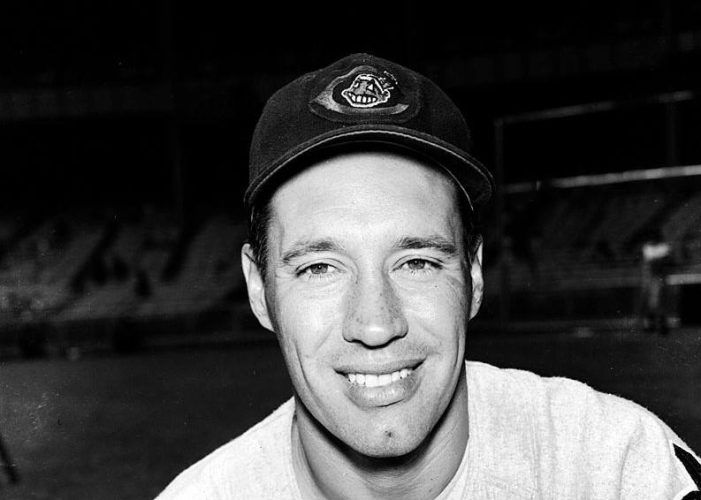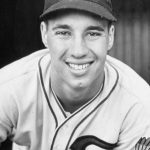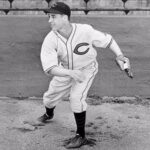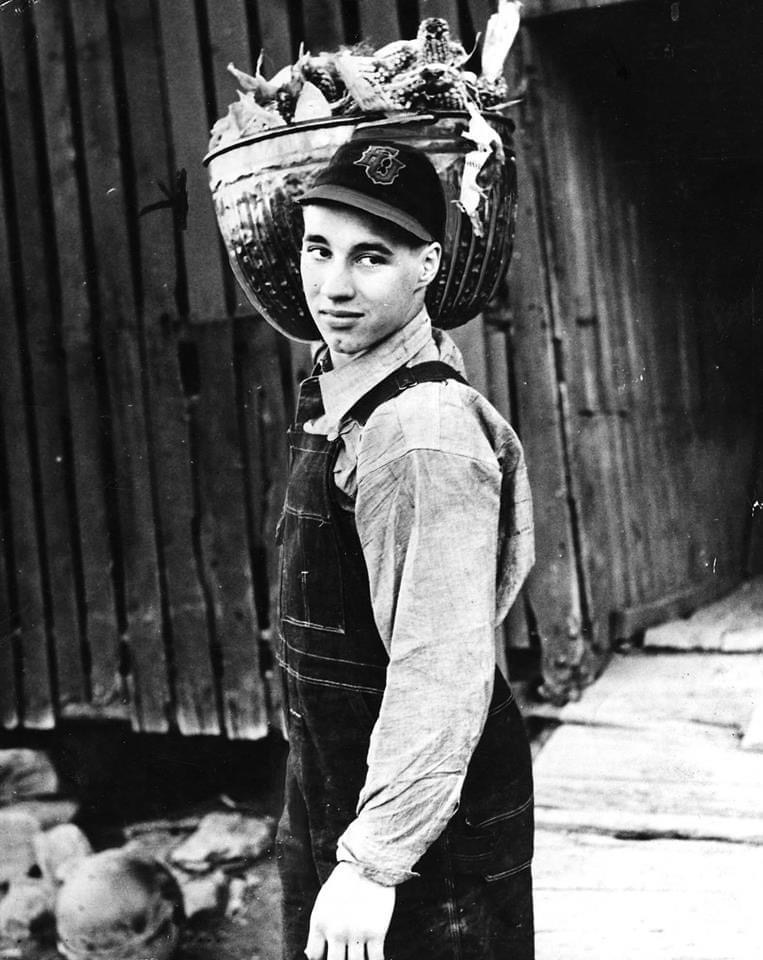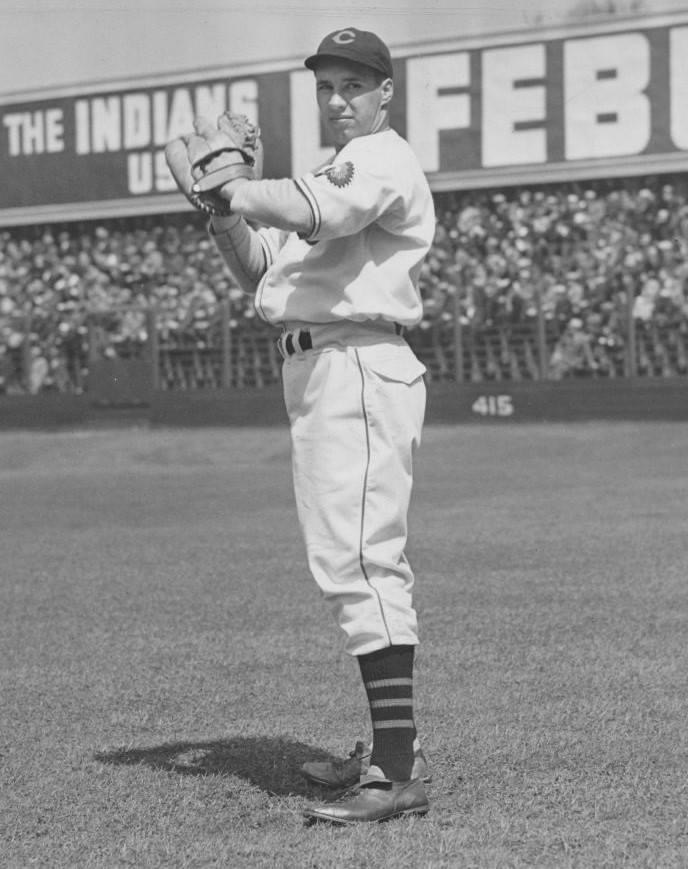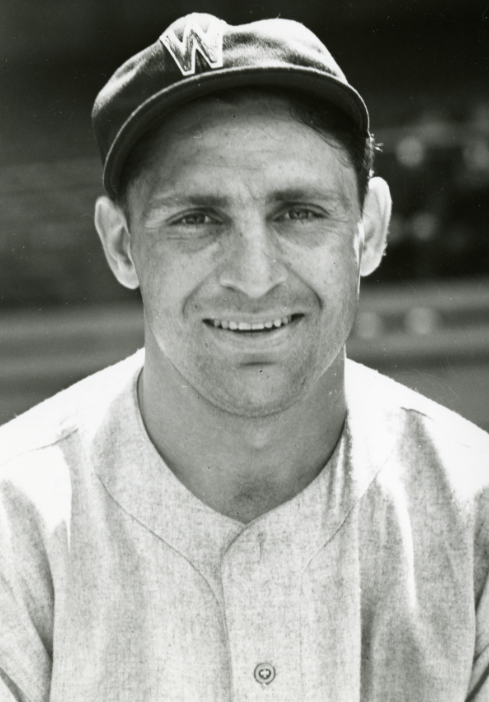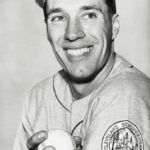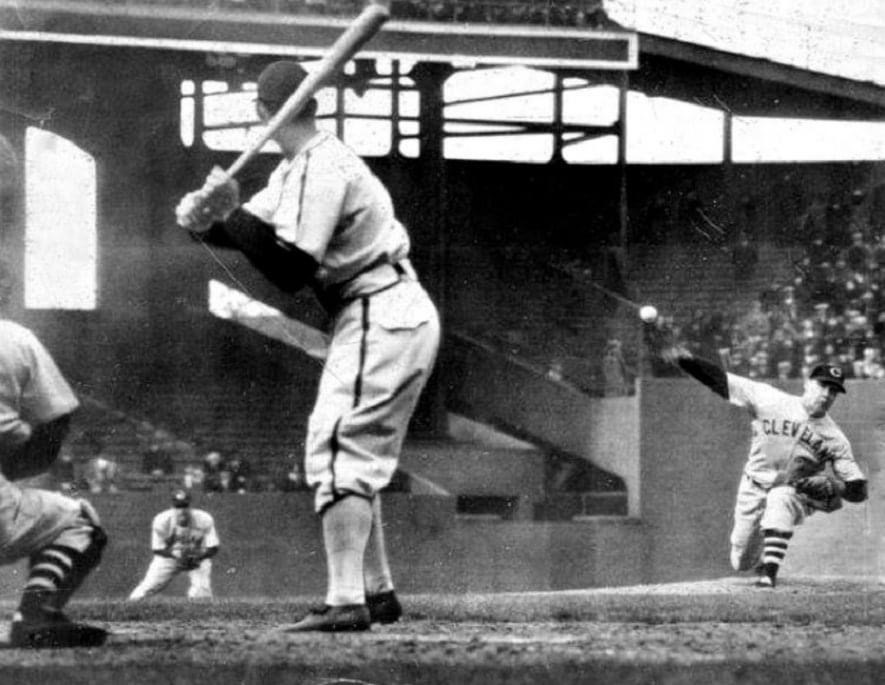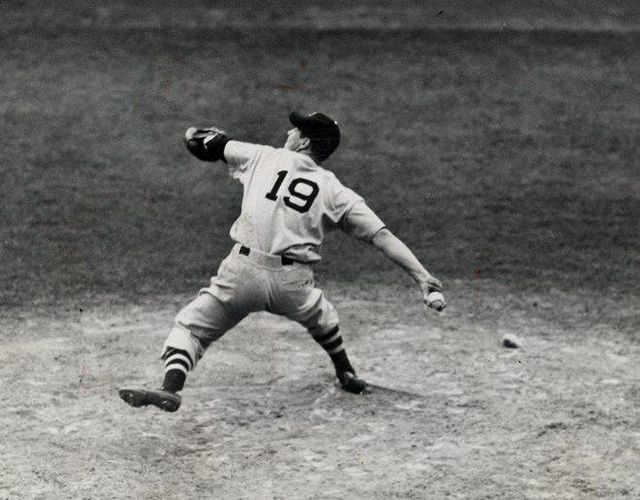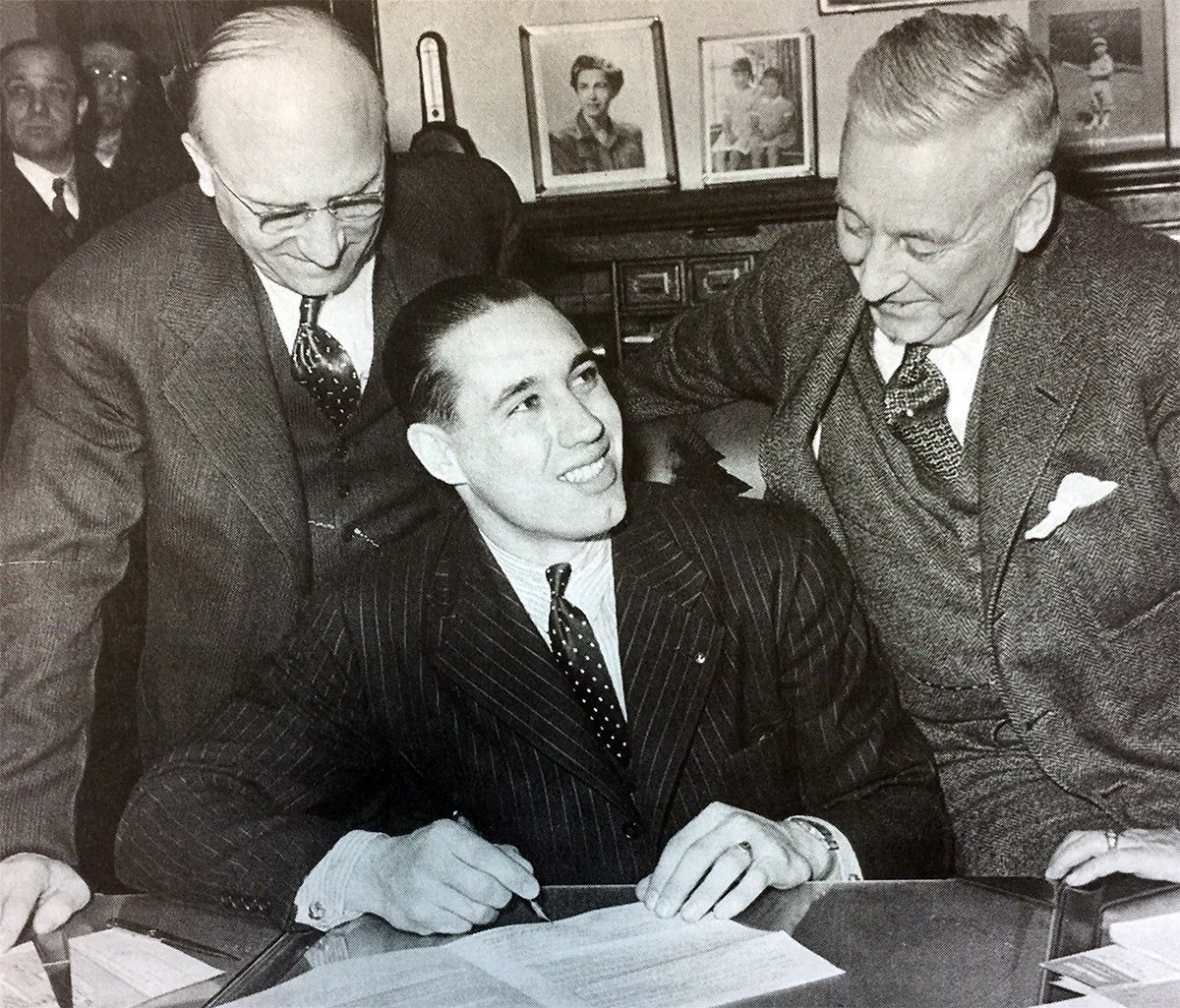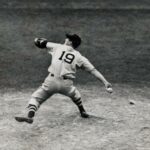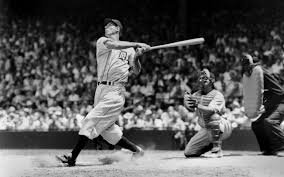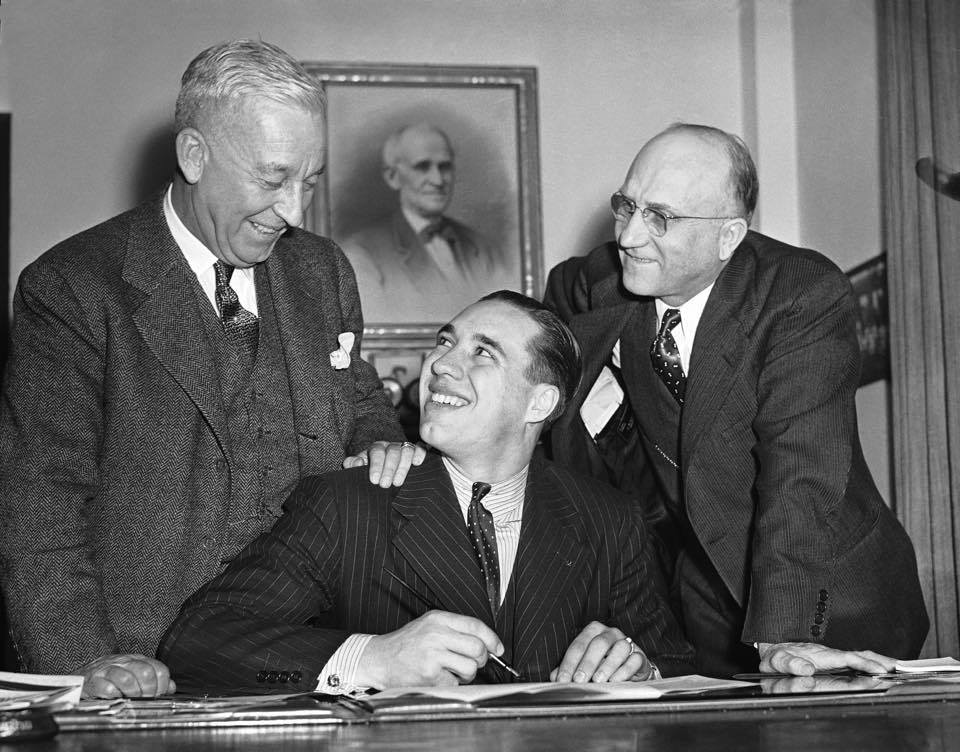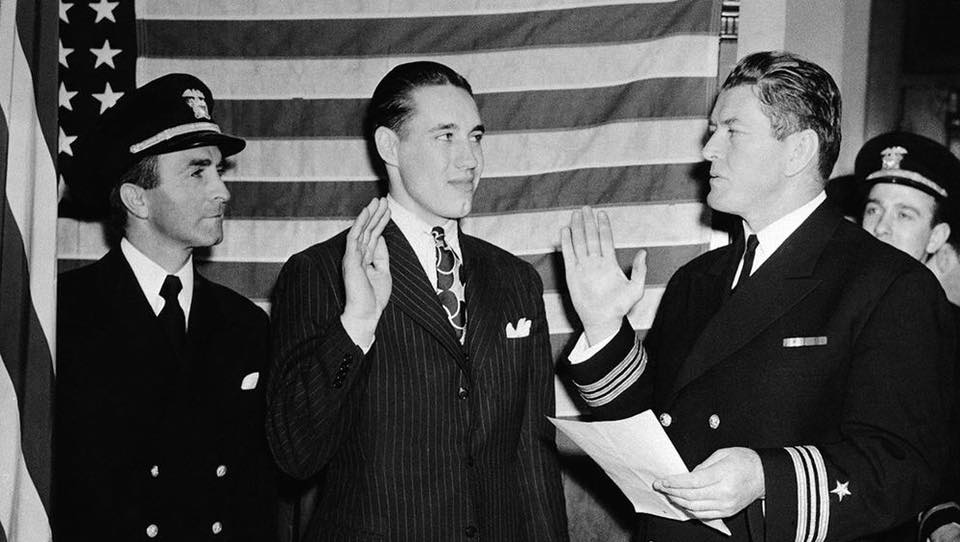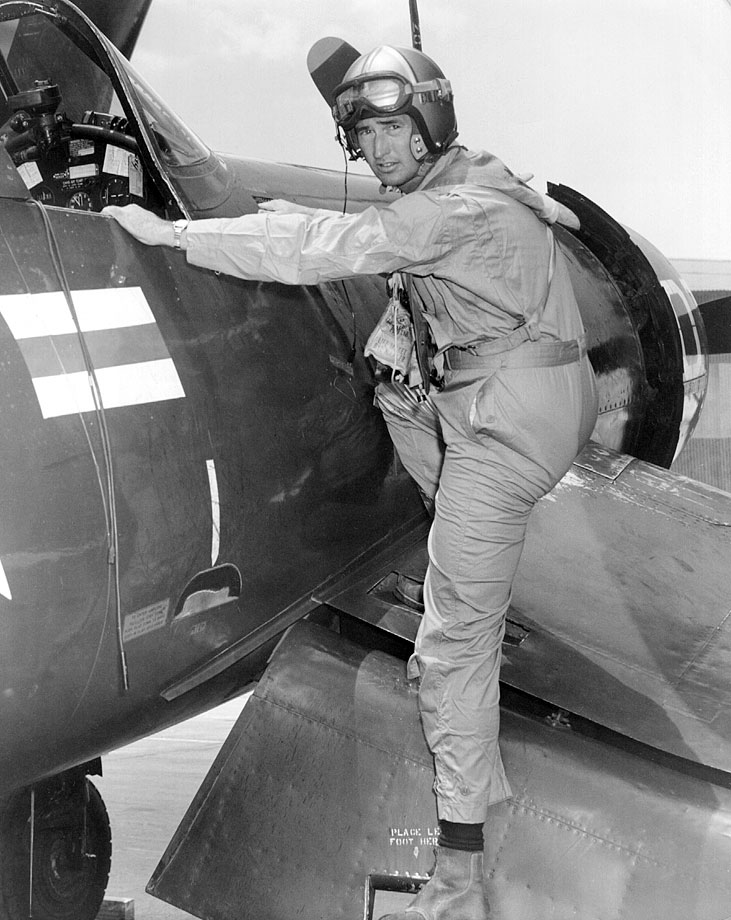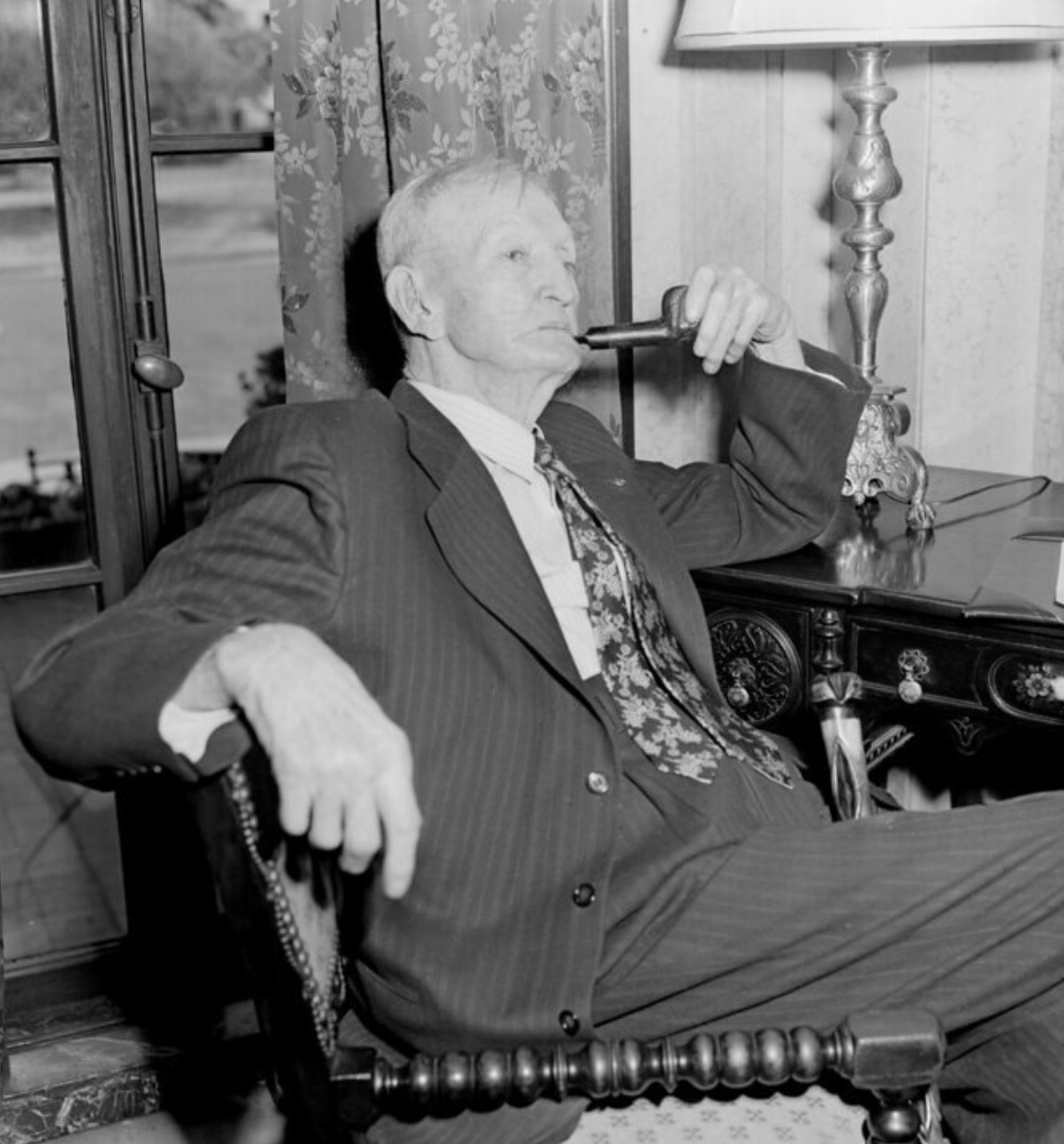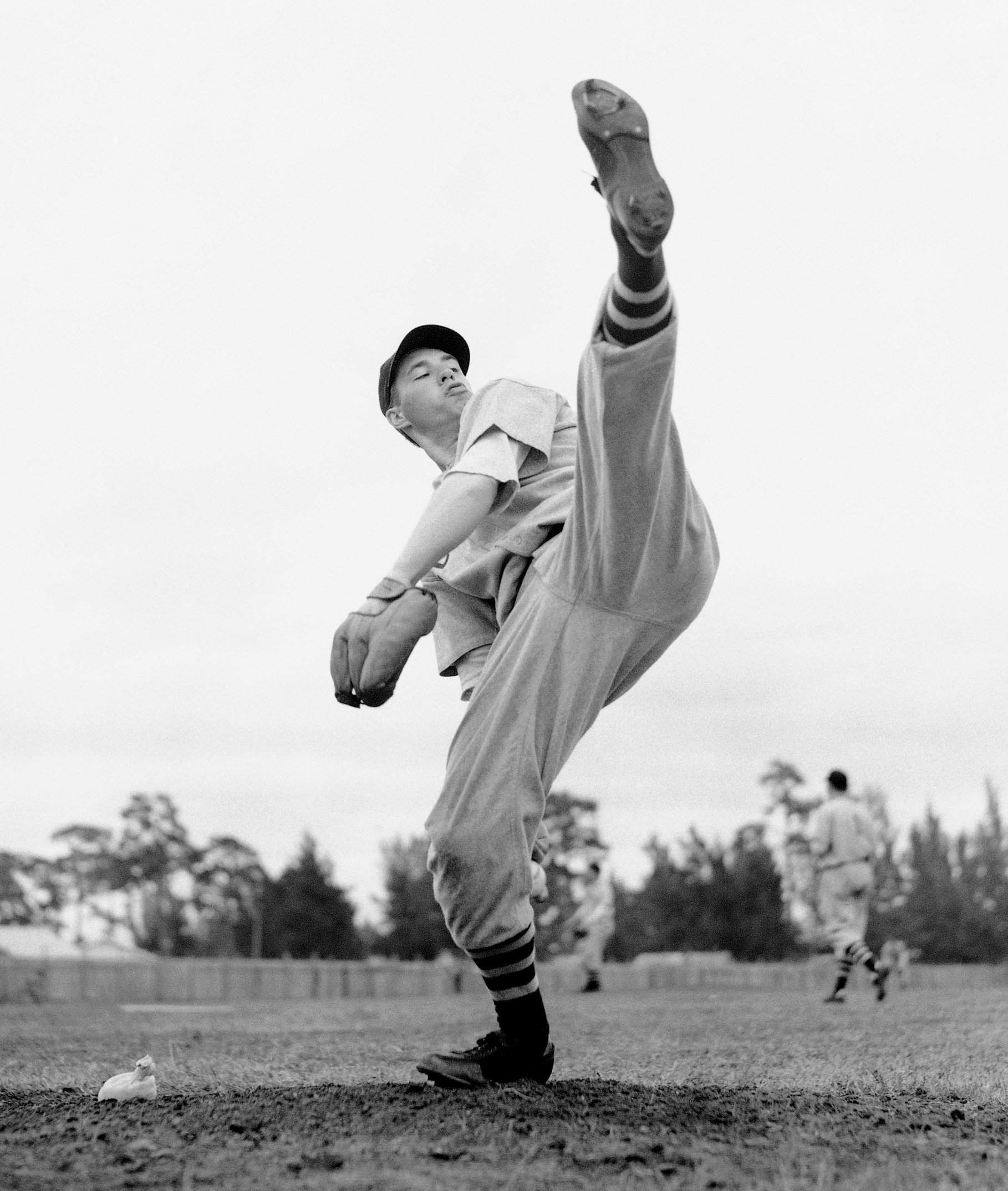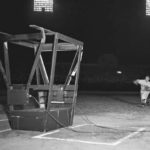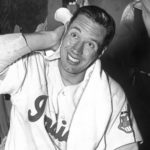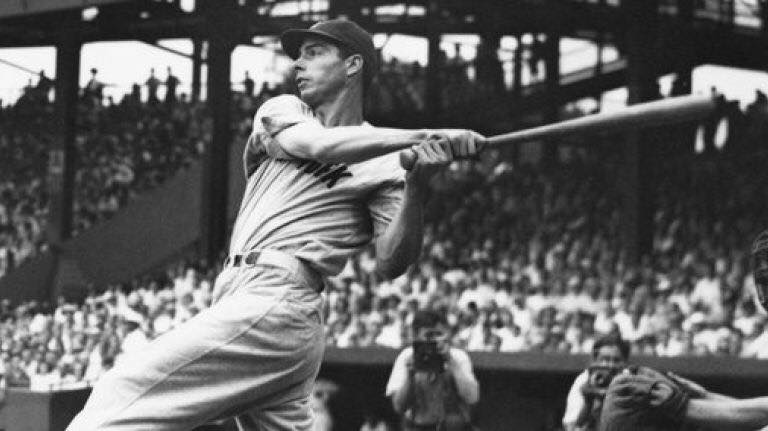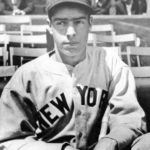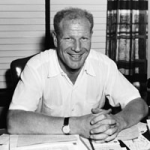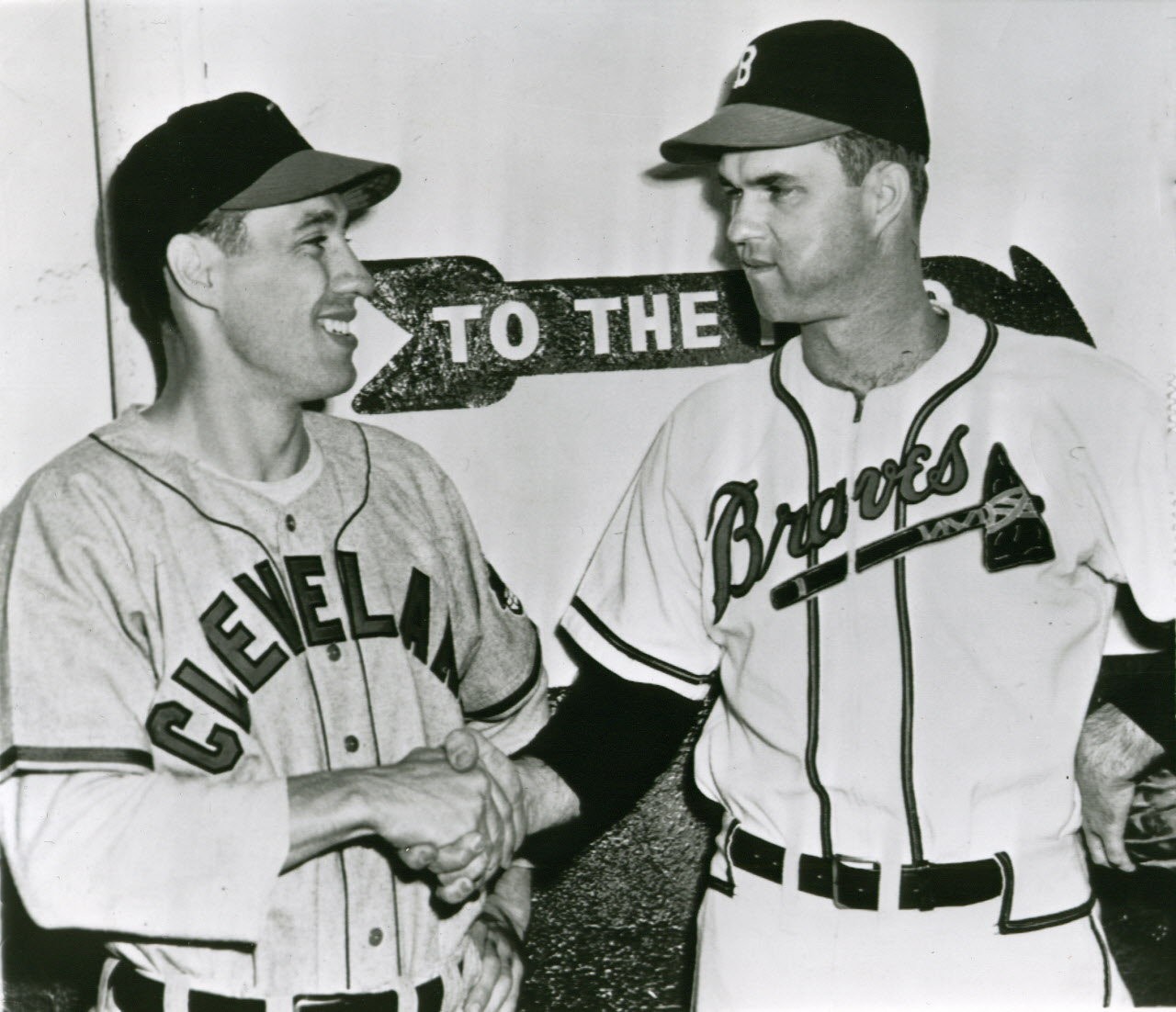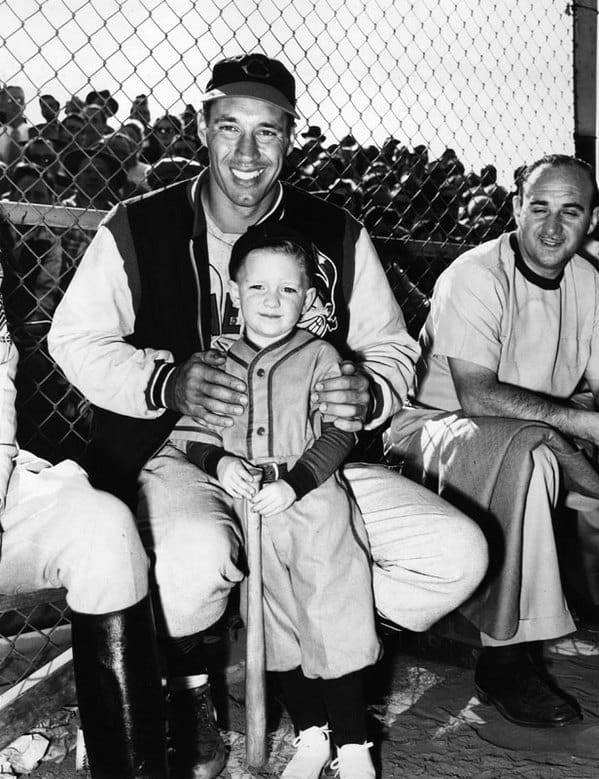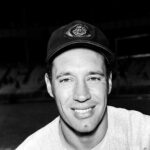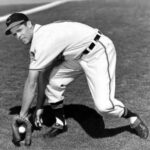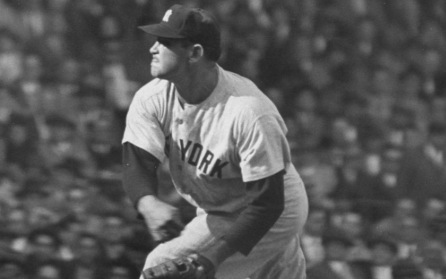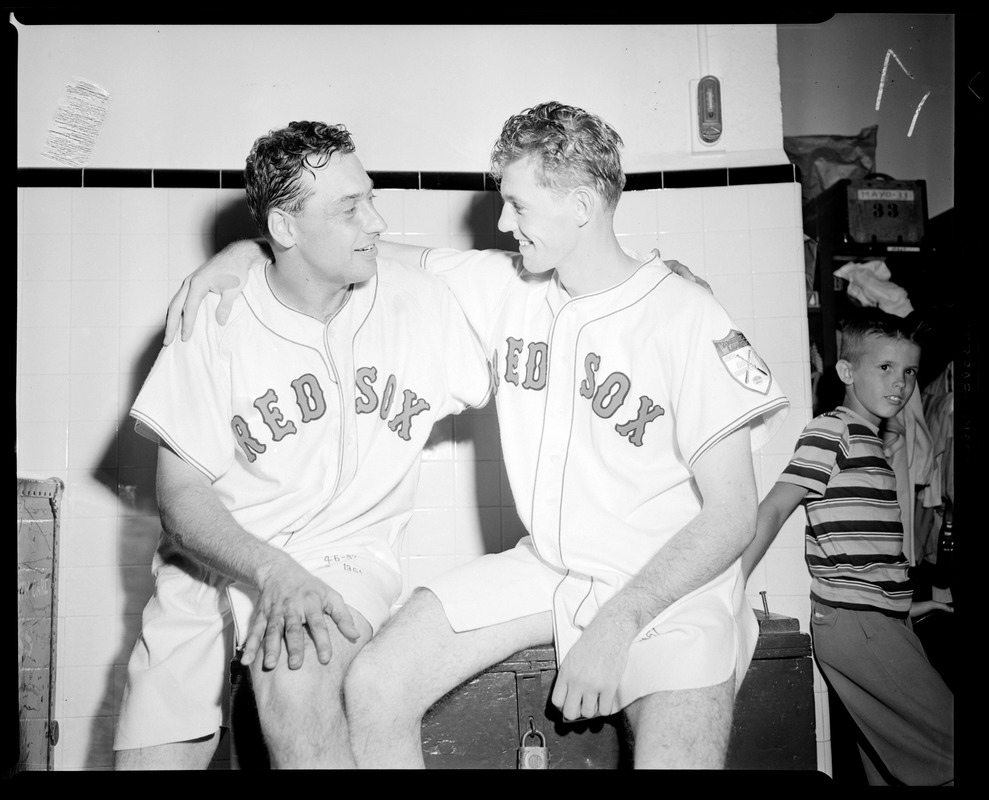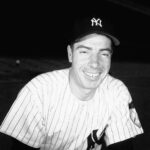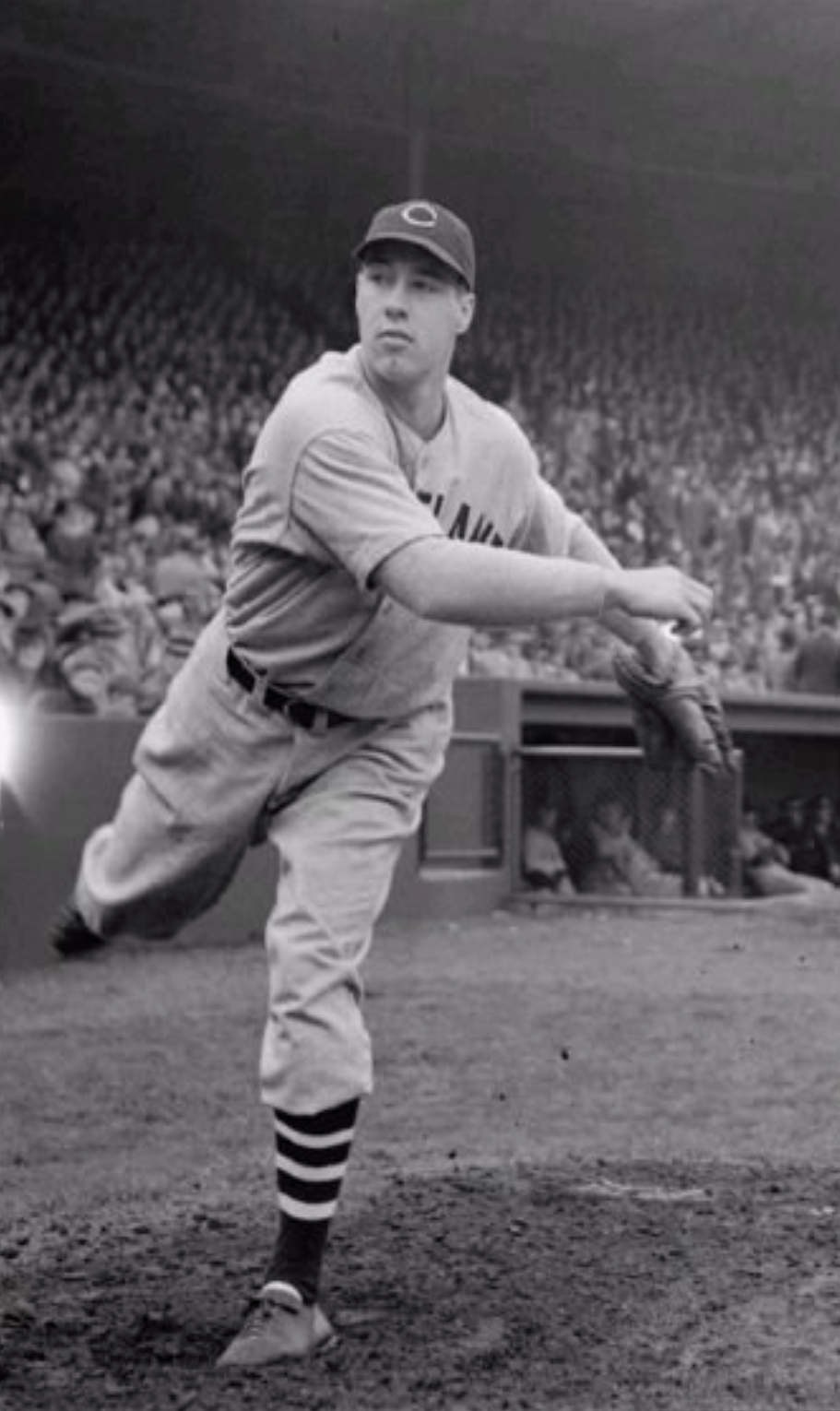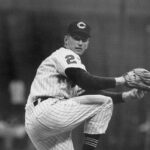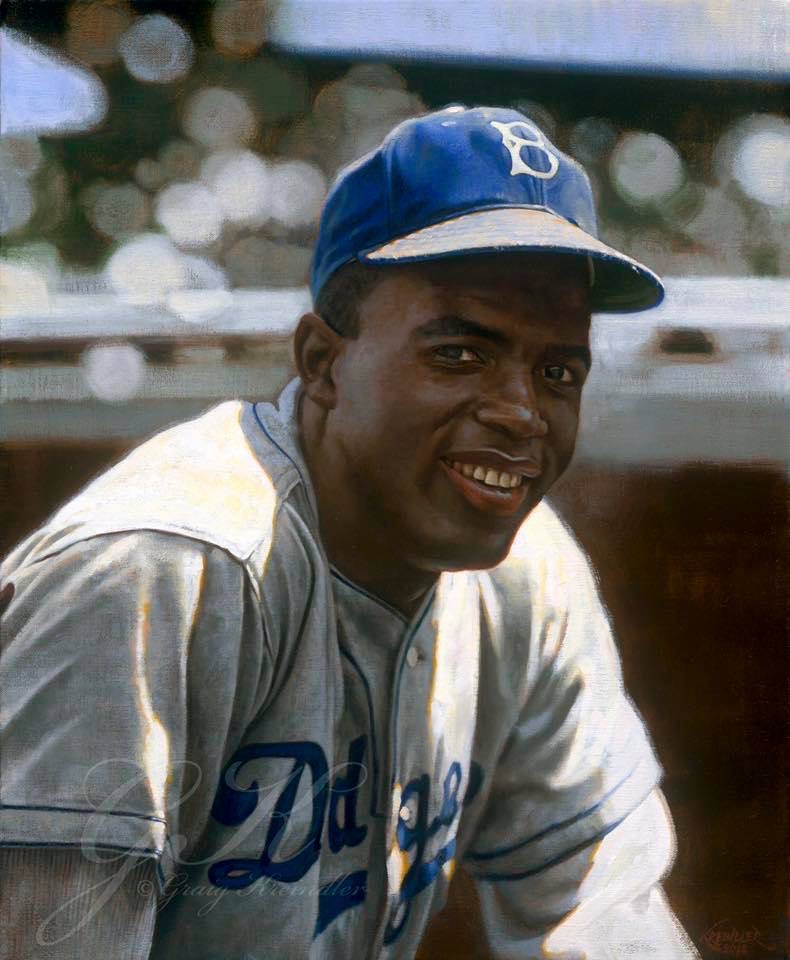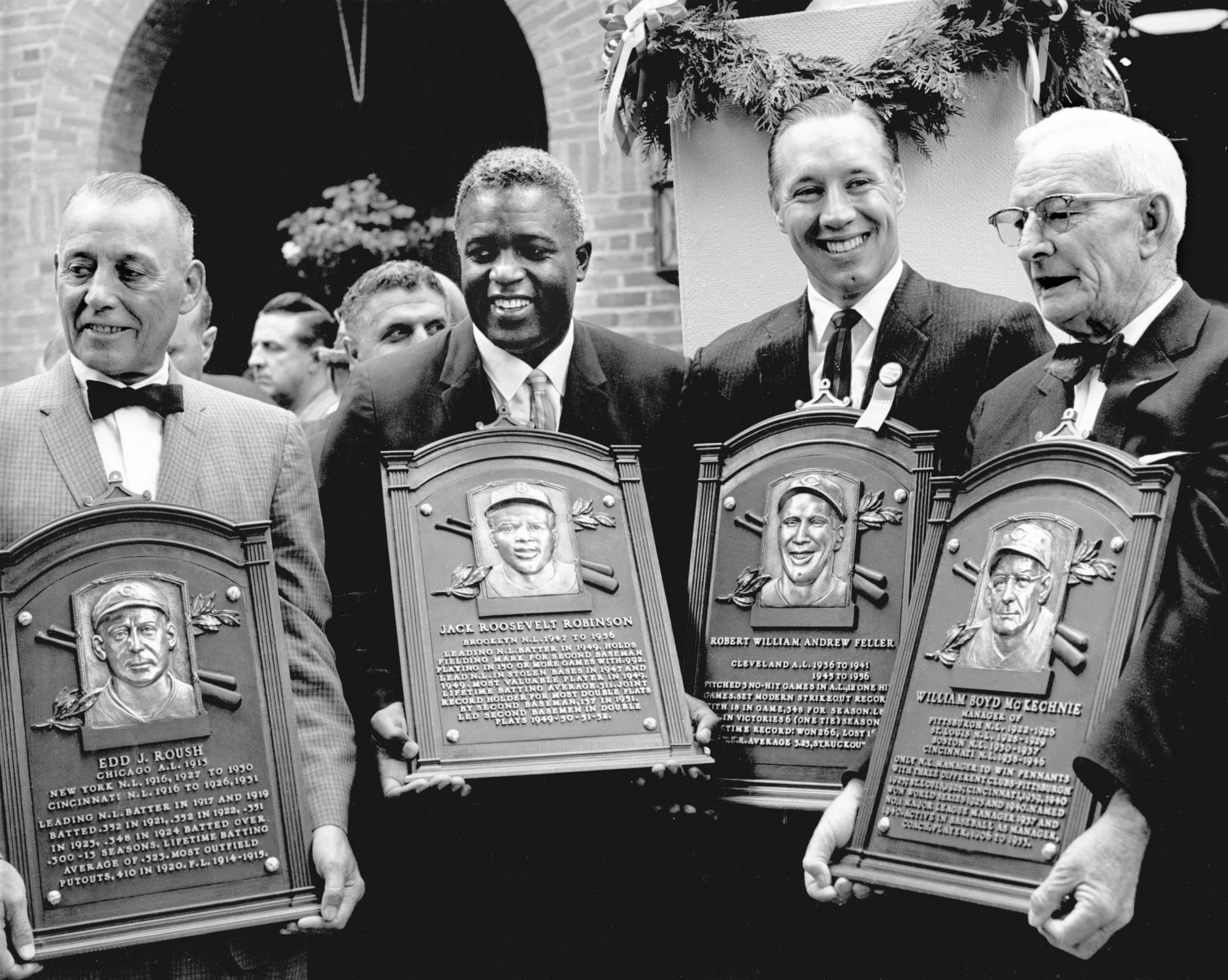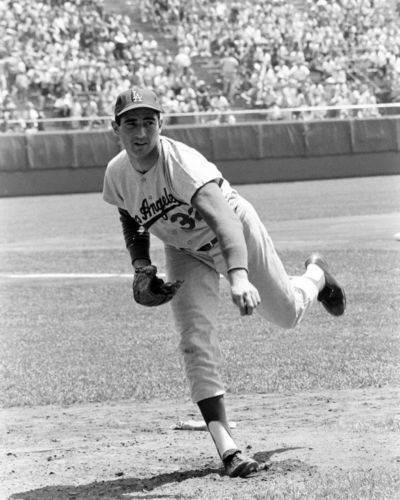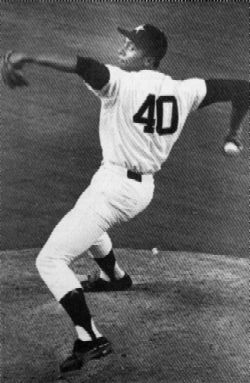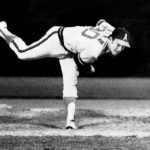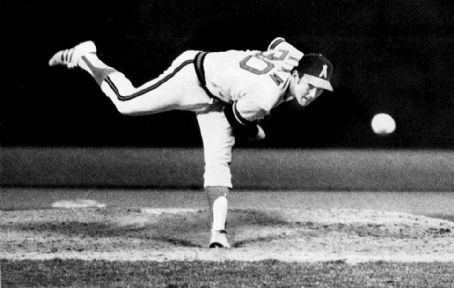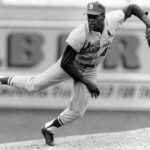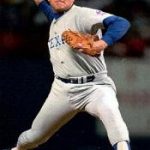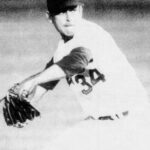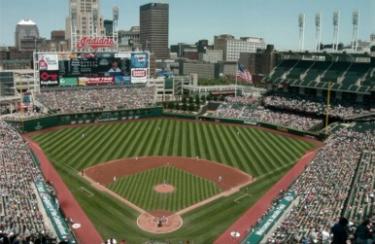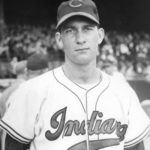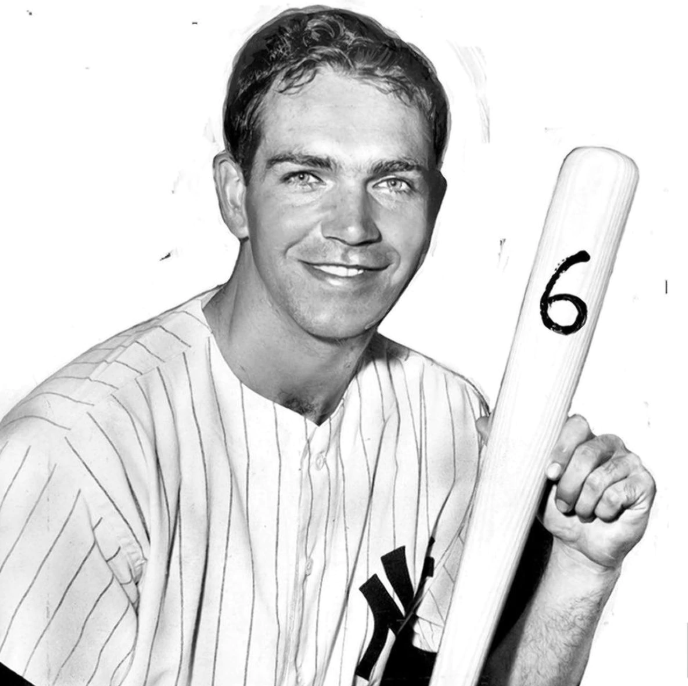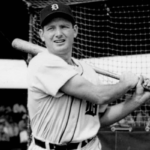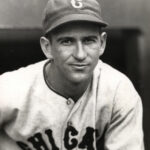Bob Feller
Position: Pitcher
Bats: Right • Throws: Right
6-0, 185lb (183cm, 83kg)
Born: November 3, 1918 in Van Meter, IA
Died: December 15, 2010 in Cleveland, OH
Buried: Gates Mills – North Cemetery, Gates Mills, OH
High School: Van Meter HS (Van Meter, IA)
Debut: July 19, 1936 (8,035th in major league history)
vs. WSH 1.0 IP, 0 H, 1 SO, 2 BB, 0 ER
Last Game: September 30, 1956
vs. DET 9.0 IP, 14 H, 0 SO, 3 BB, 8 ER, L
Hall of Fame: Inducted as Player in 1962. (Voted by BBWAA on 150/160 ballots)
View Bob Feller’s Page at the Baseball Hall of Fame (plaque, photos, videos).
Rookie Status: Exceeded rookie limits during 1936 season
Full Name: Robert William Andrew Feller
Nicknames: Rapid Robert or Heater from Van Meter
View Player Info from the B-R Bullpen
View Player Bio from the SABR BioProject
Relatives: Cousin of Hal Manders
Nine Players Who Debuted in 1936
Johnny Mize
Joe DiMaggio
Bill Nicholson
Eddie Joost
George McQuinn
Jeff Heath
Bob Feller
Nels Potter
Birdie Tebbetts
The Bob Feller Teammate Team
C: Jim Hegan
1B: Hal Trosky
2B: Bobby Avila
3B: Al Rosen
SS: Lou Boudreau
LF: Dale Mitchell
CF: Earl Averill
RF: Rocky Colavito
SP: Mel Harder
SP: Bob Lemon
SP: Early Wynn
SP: Mike Garcia
SP: Allie Reynolds
RP: Hal Newhouser
M: Steve O’Neill
Vintage Baseball HOT ON EBAY
Card Collections ENDING SOON ON EBAY
MOST WANTED ROOKIE CARDS
VINTAGE SPORTS TICKETS
Baseball Hall of Famers
Notable Events and Chronology for Bob Feller Career
Blessed with a resilient arm and an overpowering fastball that frequently approached 100 miles per hour, Bob Feller was the most dominant pitcher of his era. Despite missing four full seasons during the peak of his career to join the war effort, Feller compiled 266 victories over the course of 18 big-league seasons, including three no-hitters and a record 12 one-hitters. Many people still feel that no one has ever thrown a baseball harder than the Cleveland Indian Hall of Famer.
Robert William Andrew Feller was born on November 3, 1918 in the small midwestern town of Van Meter, Iowa. Growing up an Iowa farm boy during the 1920s, much of Feller’s childhood consisted of performing household chores and playing baseball. Feller later credited milking cows, picking corn, and baling hay with strengthening his arms and giving him the capacity to throw as hard as he did.
After pitching for the Van Meter High School baseball team, Feller signed with the Cleveland Indians for $1 and an autographed baseball. He made his major league debut with the team on July 19, 1936, more than three months shy of his 18th birthday. Without having spent a single day in the minors, the 17-year-old phenom struck out 15 St. Louis Browns in his first start in the major leagues. Feller finished the season 5-3, with a 3.34 ERA and 76 strikeouts in only 62 innings of work.
After winning nine of his 19 starts the following year, Feller began to establish himself as one of the American League’s better pitchers in 1938, finishing the campaign with a record of 17-11 and a league-leading 240 strikeouts, and being named to the All-Star Team for the first of four consecutive times. Still, the 19-year-old fireballer was far from a complete pitcher, since he also topped the circuit with 208 walks. Although Feller occasionally experienced lapses in control in subsequent seasons as well, leading all league hurlers in bases on balls allowed in two of the next three seasons, the righthander learned to better control his blazing fastball. Complementing his best pitch with a well-above-average breaking ball, Feller developed into baseball’s best pitcher in 1939, compiling an outstanding 2.85 ERA and leading all A.L. hurlers with a record of 24-9, 24 complete games, 297 innings pitched, and 246 strikeouts. Feller continued his domination of American League hitters the next two seasons, topping the league in victories, shutouts, innings pitched, and strikeouts each year. He captured the A.L. triple crown for pitchers in 1940, leading the league with 27 wins, a 2.61 ERA, and 261 strikeouts. Feller also topped the circuit with 31 complete games and 320 innings pitched, en route to finishing second to Detroit’s Hank Greenberg in the A.L. MVP voting and earning Major League Player of the Year honors. He followed that up by compiling a 3.15 ERA in 1941, while leading the league with 25 victories, six shutouts, 343 innings pitched, and 260 strikeouts. He placed third in the league MVP balloting, behind Joe DiMaggio, who hit in 56 consecutive games for the pennant-winning Yankees at one point during the season, and Ted Williams, who batted .406 for the Boston Red Sox.
At the peak of his powers, Feller became just the second major league player to enlist in the armed forces (Hank Greenberg was the first), joining the United States Navy on December 8, 1941, one day after the Japanese attacked Pearl Harbor. He spent the next four years fighting the enemy overseas, serving as Gun Captain aboard the USS Alabama. Despite being decorated with five campaign ribbons and eight battle stars, Feller later rejected the notion that he was a hero, saying: “I’m no hero. Heroes don’t come back. Survivors return home. Heroes never come home. If anyone thinks I’m a hero, I’m not.”
Having survived numerous life-threatening battles with the enemy, Feller was hardly frightened by opposing hitters when he returned to the Cleveland Indians late in 1945. He went 5-3 in his nine starts, compiling a 2.50 ERA and striking out 59 batters in 72 innings of work. Showing few after-effects from his four-year layoff, Feller had arguably the greatest season of his career in 1946. In addition to compiling an outstanding 2.18 ERA and leading the league with 26 wins, Rapid Robert led all A.L. hurlers with 10 shutouts, 348 strikeouts, 36 complete games, and 371 innings pitched.
Feller had another exceptional season in 1947, finishing 20-11 to lead the league in victories for the fifth of six times, compiling a 2.68 ERA, throwing 20 complete games, and topping the circuit with five shutouts, 299 innings pitched, and 196 strikeouts. He got his first opportunity to pitch in the World Series the following year, when the Indians captured the A.L. pennant for the first time since 1920. Feller won 19 games for the league champions, completing 18 of his 38 starts and striking out 164 batters, to lead the league in strikeouts for the seventh and final time in his career. Feller didn’t fare particularly well in the Fall Classic, losing both of his starts while compiling an ERA of just over five runs per-nine innings. However, he was a hard-luck loser in Game One, allowing only one run and two hits in a 1-0 loss to Boston Braves ace righthander Johnny Sain. Nevertheless, Cleveland came out on top in the Series, four games to two, giving Feller the only world championship of his Hall of Fame career.
Feller pitched effectively in 1949 and 1950, winning 15 and 16 games, respectively, before having his last big year in 1951. Having lost much of the velocity on his once-blazing fastball, Feller relied more on guile than ever before to post a league-leading 22-8 record and .733 winning percentage. Although he struck out only 111 batters, the 32-year-old righthander compiled a very respectable 3.50 earned run average and completed 16 of his 32 starts, en route to being named The Sporting News American League Pitcher of the Year.
Feller never again came close to winning 20 games in his five remaining seasons, but he posted an outstanding 13-3 record during Cleveland’s 1954 pennant-winning campaign. Pitching mostly in relief in 1956, Feller finished 0-4 before announcing his retirement at the conclusion of the season. He ended his career with a record of 266-162, an ERA of 3.25, and 2,581 strikeouts in 3,827 innings of work. He completed well over half his starts and threw a total of 46 shutouts. Feller surpassed 20 victories six times, compiled an ERA under 3.00 on five separate occasions, completed more than 20 games six times, threw more than 300 innings three times, topping 275 innings pitched four other times, and struck out more than 250 batters three times. He led the league in wins six times, strikeouts seven times, innings pitched five times, shutouts four times, complete games three times, and games started on five separate occasions. Feller made eight appearances on the All-Star Team and placed in the top five in the league MVP voting four times during his career.
When asked if there was ever any other pitcher who threw as hard as him, Feller revealed that those players who faced both him and Nolan Ryan at different stages in their careers told him he threw harder than the all-time strikeout king.
Many baseball historians have speculated that Feller would have won perhaps 350 games with well over 3,000 strikeouts had he not joined the military. But the Hall of Famer has often said that serving in the military to protect his country was far more important to him than playing baseball. Still feisty and opinionated after all these years, Feller has frequently voiced his displeasure over the use of performance-enhancing drugs in baseball. He has also spoken out against the possibility of Pete Rose ever being inducted into the Hall of Fame, as well as the growing inability of starting pitchers to last beyond the seventh inning. Feller, a true American institution, is 91 years old as of this writing – the oldest living member of the Baseball Hall of Fame.
@ET-DC@eyJkeW5hbWljIjp0cnVlLCJjb250ZW50IjoicG9zdF90YWdzIiwic2V0dGluZ3MiOnsiYmVmb3JlIjoiTGVhcm4gTW9yZSBhYm91dCB0aGUgdGVhbXMsIHBsYXllcnMsIGJhbGwgcGFya3MgYW5kIGV2ZW50cyB0aGF0IGhhcHBlbmVkIG9uIHRoaXMgZGF0ZSBpbiBoaXN0b3J5IC0gLSAtIC0gLSAtIC0gIiwiYWZ0ZXIiOiIiLCJsaW5rX3RvX3Rlcm1fcGFnZSI6Im9uIiwic2VwYXJhdG9yIjoiIHwgIiwiY2F0ZWdvcnlfdHlwZSI6InBvc3RfdGFnIn19@
Vintage Baseball HOT ON EBAY
Card Collections ENDING SOON ON EBAY
MOST WANTED ROOKIE CARDS
VINTAGE SPORTS TICKETS
Baseball Hall of Famers
Factoids, Quotes, Milestones and Odd Facts
A farmboy from Van Meter, Iowa, Bob Feller was only 17 when he struck out eight members of the St. Louis Cardinals in three innings of an exhibition game. After this awesome display of pitching, Feller was advised to seek voluntary retirement from high school in order to sign a pro-baseball contract. In his first major league start, against the St. Louis Browns, Feller fanned 15 hitters and never looked back. For twenty years, all with the Indians, the teenage phenomena dominated AL batters with his blazing fastball and bending curve. He hurled three no-hitters, including the only opening day gem, notched 12 one-hitters, served in World War II, and won 19 games for Cleveland’s 1948 World Championship team. Feller was the second big league star to enter the service for World War II (following Hank Greenberg). He lost almost four seasons to military duty but was still at the top of his game when he returned. His first year back from the war he set a new record for strikeouts in a season (348 in 1946). While in the U.S. Navy, Feller won eight battle stars.
Played For
Cleveland Indians (1936-1956)
Similar: Nolan Ryan, Tom Seaver, Roger Clemens
Best Season, 1940
In 47-degree weather, Feller opened the season with a no-hitter on April 16 in Comiskey Park. On the final day of the season he lost 2-0 to Detroit, as the Tigers clinched the pennant. In between those two starts he was masterful. He went 27-11 with a 2.61 ERA, with 261 K’s in more than 320 innings. He completed 31 of his 37 starts and also had four saves. He surrendered just 13 home runs.
Awards and Honors
1940 AL Triple Crown
No-Hit Fame
4/16/1940: For CLE (A) vs. CHI (A), 1-0 at CHI. 9 innings pitched.
4/30/1946: For CLE (A) vs. NY (A), 1-0 at CLE. 9 innings pitched.
7/1/1951: For CLE (A) vs. DET (A), 2-1 at CLE. 9 innings pitched.
Post-Season Appearances
1948 World Series
Description
Feller was a tall, strong farm boy with a dimple chin, all-american good looks, and a toothy smile.
Factoid
In 1969, Bob Feller was voted the greatest living right-handed pitcher, by fans celebrating baseball’s 100th anniversary.
Where He Played: Starting pitcher (484 games), reliever (86 games)
Big League Debut: July 19, 1936
Feller made his first start on August 23, when he struck out 15 against the St. Louis Browns.
Feats: Led the AL in wins, K’s and ERA in 1940, winning the pitching triple crown… On September 13, 1936, in just his 5th major league start, Feller struck out 17 Philadelphia batters, setting an AL record… On October 2, 1938, Feller fanned 18 Tigers, setting a major league record.
Milestones
-
- July 2, 1950: 200th Win… Second game of DH
Injuries and Explanation for Missed Playing Time
On May 13, 1947, in an evening start against the A’s in Philadelphia, Feller had great stuff. He fanned 10 of the first 11 outs in the game, and may have been on his way to a record-setting performance. But in the fourth inning, Feller slipped ina small pile of dirt on the mound and fell on his pitching shoulder. He left the game, but was back five days later to make his regular start, defeating New York at Yankee Stadium. He pitched 42 games that season, but by his own admission, he did it with a sore shoulder. It wasn’t until spring training in 1948 that he felt his shoulder was fine again.
No-Hitters
April 16, 1940: at Comiskey Park on Opening Day, Feller blanked the White Sox, 1-0 in 47-degree weather; April 30, 1946: at Yankee Stadium, Feller defeated the Yankees, 1-0 for his second no-hitter; July 1, 1951: in Cleveland, Feller no-hit the Tigers, 2-1, allowing an unearned run.
Factoid
In December of 1956, Feller was elected the first president of the Players Organization, a precursor to the Players’ Union.
Barnstorming Criticism
Throughout his career, Bob Feller criss-crossed the country playing exhibition games in the off-season, showcasing his legendary fastball for fans in large, medium, and small towns. His barnstorming tours often featured other big leaguers and/or negro league stars, like Satchel Paige. By the late 1940s, Feller was being criticized by a few for his jaunts. “It is the theory of many,” wrote the New York Post‘s Jimmy Cannon, “that Feller has dissipated his greatness on these trips through the villages below the big leagues and they make venomous remarks…” Cannon was (supposedly) referring top a few of Feller’s teammates, who resented Bob’s pursuit of the dollar. But the sportswriter wondered if jealousy were the real motive. “…their anger is a curious one because most of them would do exactly as [Feller] would if it were possible…” One “old scout” as Cannon called him, said of Feller’s exhibition schedule: “He’s cutting his life right in half in exhibition games. He’d make more money if he just pitched during the season and picked what he could with odds and ends and let the exhibition games go.”
In 1947, Feller announced that he would pitch in the Cuban winter league during the off-season. Unfortunately, he made the announcement in August while the Indians were in the midst of a pennant race. Cleveland fans howled. Feller explained that he had to make the announcement earlier than planned because the news was going to leak in Cuba. Regardless, Commissioner Happy Chandler ruled that no major leaguer could play in Cuba during the winter. Feller fired back at Chandler, citing that minor leaguers were not restricted by the ruling.
“Why should a major league player be limited to 30 days of barnstorming when a minor leaguer can play ball all winter?,” Feller asked. “Chandler’s ruling places a penalty on being a major leaguer.”
What If…?
Having established a level of 26 wins over the 1940-1941 seasons, Bob Feller spent all of 1942, 1943 and 1944 in the military, and pitched just nine games in 1945. He won 26 games in 1946. Assuming he would have maintained the level of 26 wins in his lost years, Feller could have won 99 more games. That would have placed him at more than 360 for his Hall of Fame career. A conservative estimate of 260 strikeouts per season would have meant Feller lost about 1,000 K’s. Adding those to his total (2,581) would have pushed him past Walter Johnson.
Quotes From Feller
“A professional ball player has just so many years of productivity in his chosen career and should cash in as much as he can, while he can. That’s the American way in all other businesses, and that’s the way it should be in baseball too.”
Number 200
Feller won his 200th career game on July 2, 1950, defeating the Tigers, 5-2 in the second game of a doubleheader.
Factoid
In the first game that Bob Feller’s mother watched her son pitch in the big leagues, on May 14, 1939, Chicago third baseman Marv Owen lined a pitch into the stands that hit her and knocked her unconscious. She recovered, but had to have stitches.
All-Star Selections
1938 AL
1939 AL
1940 AL
1941 AL
1946 AL
1947 AL
1948 AL
1950 AL
Replaced
Denny Galehouse
Replaced By
Herb Score, who for a while looked like he’d be just as good as Feller, until Gil McDougald lined a pitch that struck the lefty in the eye.
Best Strength as a Player
His fastball
Largest Weakness as a Player
Like Sandy Koufax, Sam McDowell, Nolan Ryan and Randy Johnson, Bob Feller had problems with his control early in his career. He walked as many as 208 batters in a season, and as late as the age of 29, he walked more than 100. Like those other power pitchers, Feller improved his control enough to be deadly. He threw more one-hitters (12) and two-hitters than any pitcher since Walter Johnson. Ryan would surpass his low-hit game totals.
Other Resources & Links
More Feller Pages

